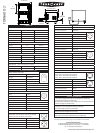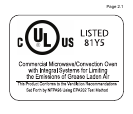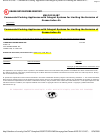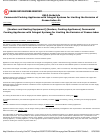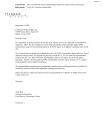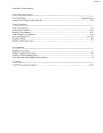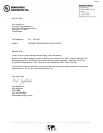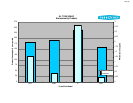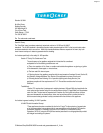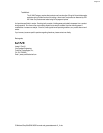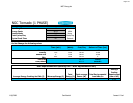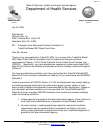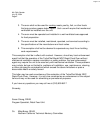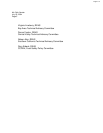
EXHAUST SYSTEMS
air from the exhaust outlet discharges away from such
locations.
506.4 Ducts serving Type
II
hoods. Single or combined Type
II exhaust systems for food-processing operations shall be
independent
of
all other exhaust systems. Commercial kitchen
exhaust systems serving Type II hoods shall comply with Sec-
tions 506.4.1 and 506.4.2.
506.4.1 Type
II
exhaust outlets. Exhaust outlets for ducts
serving Type II hoods shall comply with Sections401.4 and
401.4.2. Such outlets shall be protected against local
weather conditions and shall meet the provisions for exte-
rior wall opening protectives in accordance with the
Inter-
national Building Code.
506.4.2 Ducts. Ducts and plenums serving Type II hoods
shall be constructed
of
rigid metallic materials. Duct con-
struction, installation, bracing and supports shall comply
with Chapter
6.
Ducts subject to positive pressure and ducts
conveying moisture-laden or waste-heat-Iaden air shall be
constructed, joined and sealed in an approved manner.
506.5 Exhaust equipment. Exhaust equipment, including
fans and grease reservoirs, shall comply with Sections 506.5.1
through 506.5.5 and shall be
of
an approved design or shall be
listed for the application.
506.5.1 }:xhaustfans. Exhaust fan housings serving aType
I hood shall be constructed
as
required for grease ducts in
accordance with Section 506.3.1.1.
Exception: Fans listed and labeled in accordance with
UI-I762.
506.5.1.1
Fan
motor. Exhaust fan motors shall be
located outside
of
the exhaust airstream.
506.5.2 Exhaustfan discharge. Exhaust fans shall be posi-
tioned so that the discharge will not impinge on the roof,
other equipment or appliances or parts
of
the structure. A
vertical discharge fan shall be manufactured with an
approved drain outlet at the lowest point
of
the housing to
permit drainage
of
grease to an approved grease reservoir.
506.5.3 Exhaust fan mounting. An upblast fan shall be
hinged and supplied with a flexible weatherproof electrical
cable to permit inspection and cleaning. The ductwork shall
extend a minimum
of
18
inches (457 mm) above the roof
surface.
506.5.4 Clearances. Exhaust equipment serving a Type I
hood shall have a clearance to combustible construction
of
not less than
18
inches (457 mm).
Exception: Factory-builtexhaust equipment installed in
accordance with Section 304.1 and listed for a
l,~sser
clearance. '
506.5.5 Terminationlocation. The outlet
of
exhaust equip-
ment serving Type I hoods shall be in accordance with Sec-
I tion 506.3.12.
Exception: The minimum horizontal distance between
vertical discharge fans and parapet-type building struc-
tures shall be 2 feet (610 mm) provided that such struc-
44
tures are not higher than the top
of
the fan discharge
opening.
SECTION 507
COMMERCIAL KITCHEN HOODS
507.1 General. Commercial kitchen exhaust hoods shall com-
ply with the requirements
of
this section. Hoods shall be Type I
orType II and shall be designed to capture and confine cooking
vapors and residues. Commercial kitchen exhaust hood sys-
I
tems shall operate during the cooking operation.
Exceptions:
1.
Factory-built commercial exhaust hoods which are
tested in accordance with UL 710, listed, labeled and
installed in accordance with Section 304.1 shall not
be required to comply with Sections 507.4, 507.7,
507.11,507.12,507.13,507.14 and 507.15.
2.
Factory-built commercial cooking recirculating sys-
tems which are tested in accordance with UL 710B,
I
listed, labeled and installed in accordance with Sec-
tion 304.1 shall not be required to comply with Sec-
tions 507.4,507.5,507.7,507.12,507.13,507.14 and
507.15.
3.
Net exhaust volumes for hoods shall be permitted to
be reduced during no-load cooking conditions, where
engineered or listed multispeed or variable-speed
controls automatically operate the exhaust system to
maintain capture and removal
of
cooking effluents as
required by this section.
507.2 Where required. A Type I or Type II hood shall be
installed at or above all commercial cooking appliances in
accordance with Sections 507.2.1 and 507.2.2. Where any
cooking applianceunder a singlehood requires a Type Ihood, a
Type I hood shall be installed. Where a Type II hood is
required, a Type I or Type II hood shall be installed.
..
507.2.1 Type I hoods. Type I hoods shall be installed where
cooking appliances produce grease or smoke, such as
occurs with griddles, fryers, broilers, ovens, ranges and wok
ranges.
507.2.1.1 Operation. Type I hood systems shall be
designed and installed to automatically activate the
exhaust fan whenever cooking operations occur. The
activation
of
the exhaustfan shall occur through an inter-
lock with the cooking appliances, by means
of
heat sen-
sors or by means
of
other approved methods.
507.2.2. Type
II
hoods. Type II hoods shall be installed
where cooking or dishwashing appliances produce heat,
steam, orproducts
of
combustion and do not produce grease
or smoke, such
as
steamers, kettles, pasta cookers and
dishwashing machines.
Exceptions:
1.
Under-counter-type commercial dishwashing
machines.
2.
A Type II hood is not required for dishwashers and
potwashers that are provided with heat and water
2006 INTERNATIONAL
MECHANICAL
CODE@
vapor exhaust systems that are supplied by the
appliance manufacturer and are installed in accor-
dance with the manufacturer's instructions.
....
3.
A single light-duty electric convection, bread,
retherm or microwave oven. The additional heat
and moisture loads generated by such appliances
shall be accounted for in the design
of
the HVAC
system.
4. A Type II hood is not required for the following
electrically heated appliances: toasters, steam
tables, popcorn poppers, hot dog cookers, coffee
makers, rice cookers, egg cookers, holding/warm-
ing ovens. The additional heat and moisture loads
generated by such appliances shall be accounted
for in the design
of
the HVAC system.
507.2.3 Domestic cooking appliances used for commer-
cial purposes.
Domestic cooking appliances utilized for
commercial purposes shall be provided with Type I orType
II hoods
as
required for the type
of
appliances andprocesses
in accordance with Sections 507.2, 507.2.1 and 507.2.2.
507.2.4 Extra-heavy-duty. Type I hoods for use over
extra-heavy-duty cooking appliances shall not cover other
appliances that require fire extinguishing equipment and
such hoods shall discharge to an exhaust system that is inde-
pendent
of
other exhaust systems.
507.3 Fuel-burning appliances. Where vented fuel-burning
appliances are located in the same room or space as the hood,
provisions shallbe made to preventthe hood system from inter-
fering with normal operation
of
the appliance vents.
507.4 Type I materials. Type I hoods shall be constructed
of
steel not less than 0.043 inch (1.09 mm) (No.
18
MSG) inthick-
ness, or stainless steel not less than 0.037 inch (0.94 mm) (No.
20 MSG) in thickness.
507.5 Type
II
hood materials. Type II hoods shall be con-
structed
of
steel not less than 0.030 inch (0.76 mm) (No. 22
Gage) inthickness, stainless steelnot less than0.024 inch(0.61
mm) (No. 24 Gage) in thickness, copper sheets weighing not
less than 24 ounces per square foot (7.3 kg/m
2
),
or
of
other
approved material and gage.
507.6 Supports.Type I hoods shallbe secured in placeby non-
combustible supports. All Type I and Type II hood supports
shall be adequate for the applied load
of
the hood, the unsup-
ported ductwork, the effluent loading, and the possible weight
of
personnel working in or on the hood.
507.7 Hood joints, seams
and
penetrations. Hood joints,
seams and penetrations shall comply with Sections 507.7.1 and
507.7.2.
507.7.1 Type I hoods. External hoodjoints, seams andpen-
etrations for Type I hoods shall be made with a continuous
external liquid-tight weld or braze to the lowest outermost
perimeter
of
the hood. Internal hood joints, seams, penetra-
tions, filter support frames, and other appendages attached
2006
INTERNATIONAL
MECHANICAL
CODE@
EXHAUST SYSTEMS
inside the hood shall not be required to be welded or brazed
but shall be otherwise sealed to be grease tight.
Exceptions:
1.
Penetrations shall not be required to be welded or
brazed where sealed by devices that are listed for
the application.
2.
Internal welding or brazing
of
seams, joints, and
penetrations
of
the hood shall not be prohibited
provided that thejointis formed smooth orground
so as to not trap grease, and is readily cleanable.
507.7.2 Type
II
hoods. Joints, seams and penetrations for
Type II hoods shall be constructed as set forth in Chapter
6,
shall be sealed on the interior
of
the hood and shall providea
smooth surface that is readily cleanable and water tight.
507.8 Cleaning
and
grease gutters. A hood shall be designed
to providefor thorough cleaning
of
the entire hood. Grease gut-
ters shall drain to an approved collection receptacle that is fab-
ricated, designed and installed to allow access for cleaning.
507.9 Clearances for Type I hood. A Type I hood shall be
installed with a clearance to combustibles
of
not less than
18
inches (457 mm).
Exception: Clearance shall not be required from gypsum
wallboard attached to noncombustible structures provided
that a smooth, cleanable, nonabsorbent and noncombustible
material is installedbetween the
h90d and the gypsum wall-
board over an area extending not less than
18
inches (457
mm) in all directions from the hood.
507.10 Hoods penetrating a ceiling. Type I hoods orportions
thereofpenetrating a ceiling, wall orfurred space shall comply
with all the requirements
of
Section 506.3.10.
507.11 Grease filters. Type I hoods shall be equipped with
listed grease filters designed for the specific purpose.
Grease-collecting equipment shall be provided with access for
cleaning. The lowest edge
of
a grease filter located above the
cooking surface shall be not less than the height specified in
Table 507.11.
TABLE
507.11
MINIMUM DISTANCE BETWEEN THE LOWEST EDGE OF A
GREASE FILTER
AND
THE COOKING SURFACE OR THE
HEATING SURFACE
TYPE
OF
COOKING
HEIGHTABOVE COOKING
APPLIANCES
SURFACE (feet)
Without exposed flame 0.5
Exposed flame and burners
2
Exposed charcoal and charbroil type 3.5
For
SI:
1foot =304.8
mm.
507.11.1 Criteria. Filters shall be
of
such size, type and
arrangement as will permit the required quantity
of
air to
pass through such units at rates not exceeding those for
which the filter or unit was designed
or' approved. Filter
units shall be installed in frames or holders so as to be
readily removable without the use
of
separate tools, unless
45
Page 7.1



